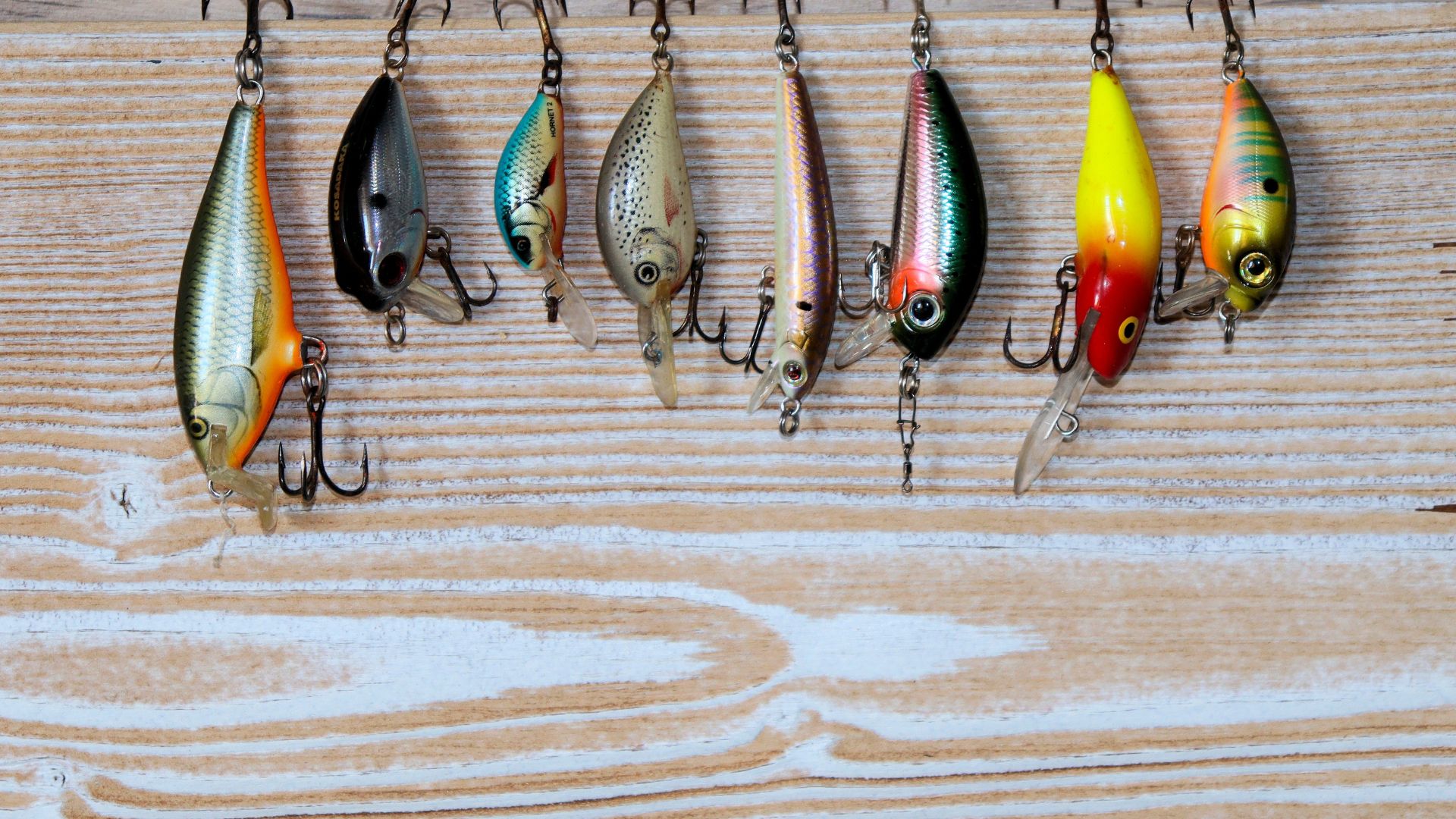Choosing Fishing Tackle and Bait

Your bait and tackle choices will have a major effect on the success of your fishing efforts. Simply put, tackle is any combination of pole, line, hook that allows you to catch fish.
Bait can come in two forms, either live or artificial. Artificial baits tend to imitate what fish commonly feed on, such as minnows, bugs or crustaceans.
Crankbaits
Crankbaits mimic the action of baitfish to draw strikes from both feeding and lethargic fish alike, making them highly versatile tools to target different species at various times of year.
Crankbaits come in various forms – hand carved from balsa wood or manufactured machine-made in plastic – making them available to anglers of every kind and size. Some models feature weighted lips to run at different depths while others can float or suspend from a line.
When selecting a crankbait, its lip size should be taken into consideration as an integral factor. The lip serves multiple purposes – producing lifelike wobble while retrieving, deflecting off underwater structures to prevent snags and hang-ups, as well as controlling its diving depth – wider-angled lips often dive deeper with wider wobbles; narrower-angled lips work better in shallow water environments. Furthermore, its body shape must also be considered: rounder bodies tend not to get stuck between wood cover more easily than flat sides lures do – providing another advantage when selecting your crankbait!
Soft Plastics
Soft plastics have long been a mainstay of modern fishing tackle. Created to resemble bait fish, worms, grubs, crawfish, amphibians and amphibians in terms of texture and features that appeal to their olfactory senses, they make highly effective lures for trout. Many manufacturers add layers of colors, metal flakes, scents or even holographic flash to increase effectiveness; larger soft baits with hooks buried into them can even be used to craft sophisticated rig designs like Carolina and Texas rig designs.
As they make their first steps into soft plastic lure fishing, most anglers start out by selecting several proven bait styles and colors when starting with soft plastic lures. It may seem daunting at first to learn all of your options but keeping things simple will help you become an adept soft bait fisher. Soft lures are made out of plastisol material which can either be hand poured or injection molded; some anglers prefer hand-poured baits while others find injection-molded lures perform better.
Tubes
After years of creature baits, buzzbaits and spinners becoming popular, tube lures still hold an essential place in most anglers’ tackle boxes. Mike McClelland likes using hard-sinking lures such as the 4-inch Tour Flipper Tube when fishing heavy cover – specifically this hard-sinking bait with thin walls making it easier to drive home hooks when necessary. His favorite tube lure is Mike McClelland’s favorite 4-inch Tour Flipper Tube as its hard sinking nature works great against heavy cover as long as its cast away from heavy brush but close enough so as not to let it come close enough that Mike McClelland likes using short casts away and giving some line out just outside its target zone allowing it to pendulum back toward it and spiral down towards heavy cover like real lifelike action when fishing heavy cover. Mike McClelland favors his favorite hard sinker when fishing heavy cover for optimal results he suggests casting away from heavy cover while giving slack line so the bait pendulum back toward it for lifelike action when casting away from cover then giving it some slack line to let pendulum back towards it then spiral back toward it then spiral down towards it when casting away to let pendulum back toward brush to allow pendulum action with more lifelike action that spiral down through heavy cover before sinking back down into thick cover allowing him also likes its thin walls making driving hook home when needed.
To rig a tube lure properly, first add commercial scent to its body cavity before searching for its hook eye by feeling or searching for bulges beneath plastic. Some anglers prefer piercing their body before hand with small snips or blades to reduce friction and ensure an effective hook set. For maximum bass attraction use a 3/8ths-ounce slip sinker equipped with a 5/0 Daiichi copperhead hook.
Walk the Dog
When bass are fickle and wind is blowing hard, long, slender stick baits known as “walkers” could provide the solution. Their zigzagging motion mimics that of wounded baitfish and stimulates predatory instincts in big bass fishers.
With a short rod with medium to light action, anglers employ different retrieves to get their lures swimming. Quick snaps of the rod tip create tight zigzagging action; waiting a second between each twitch of the rod tip creates wider side-to-side glides.
Braid or mono line can both work effectively when fishing walk-the-dog baits, although many anglers prefer fluorocarbon leaders for greater sensitivity and flotation; furthermore, thin leaders are less likely to tangle on hooksets.
